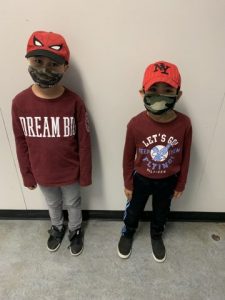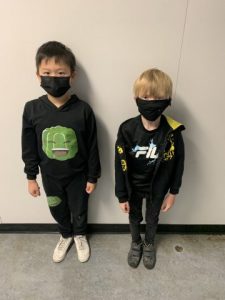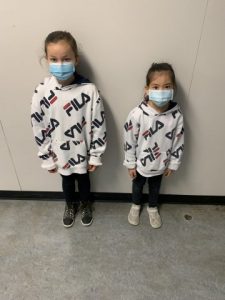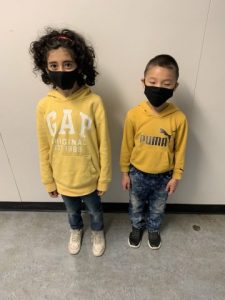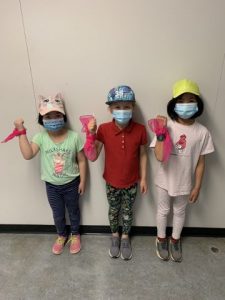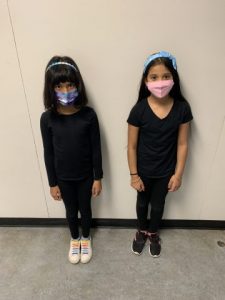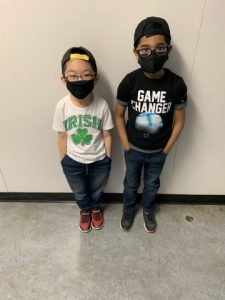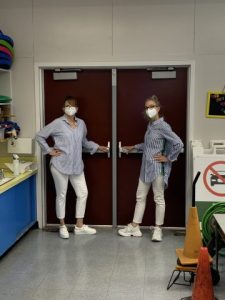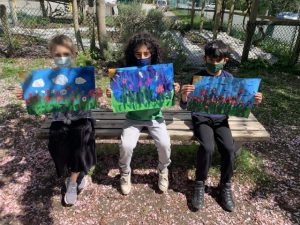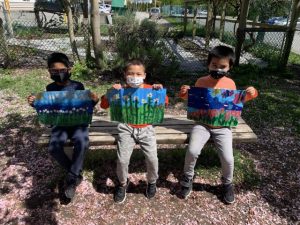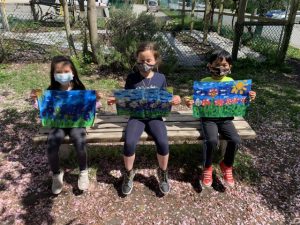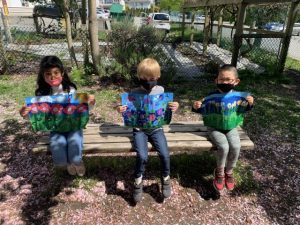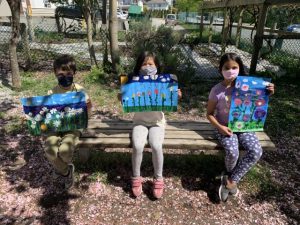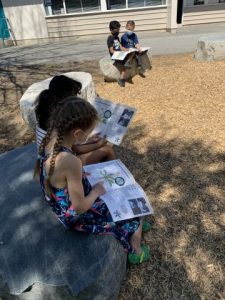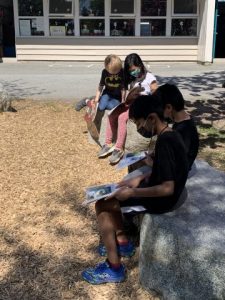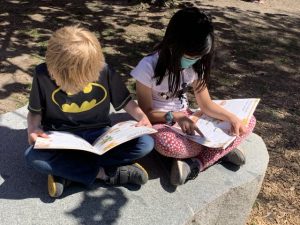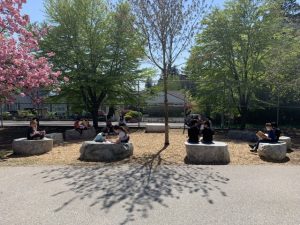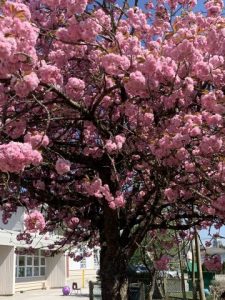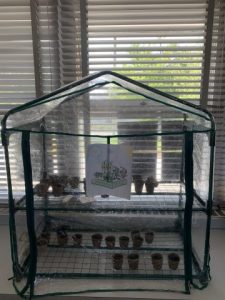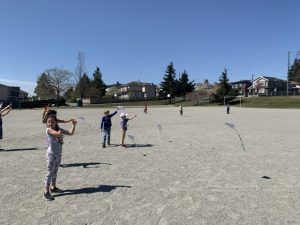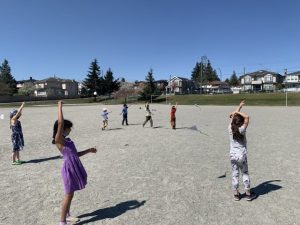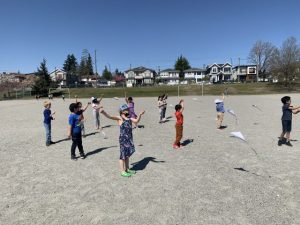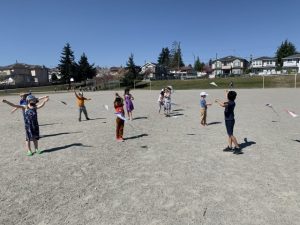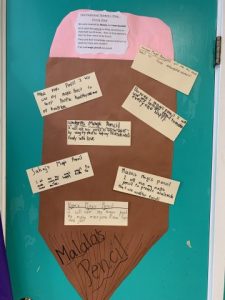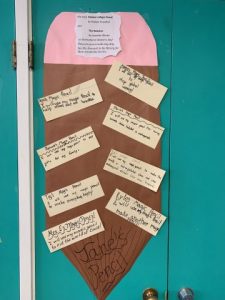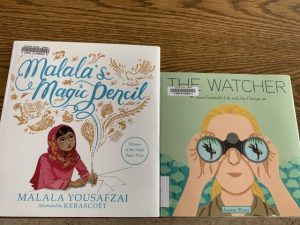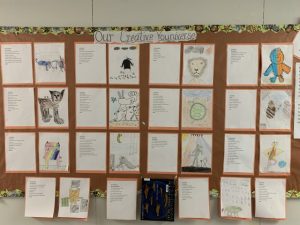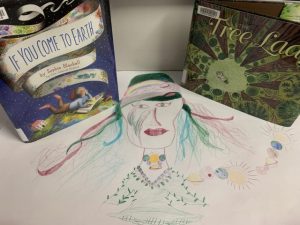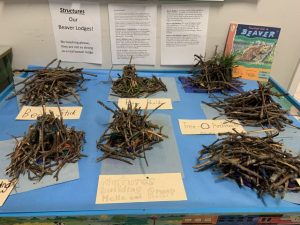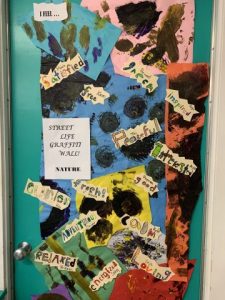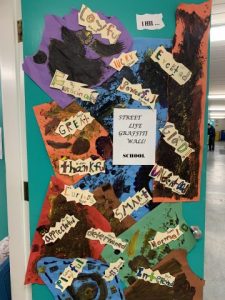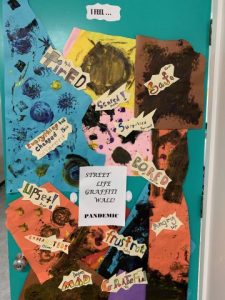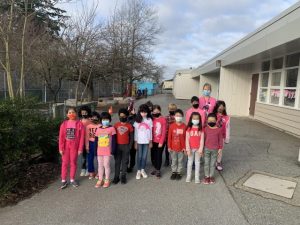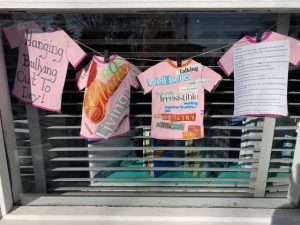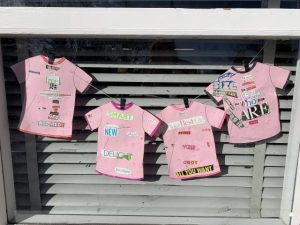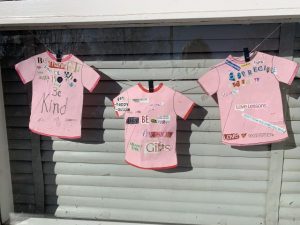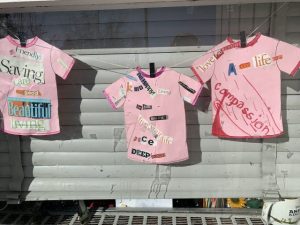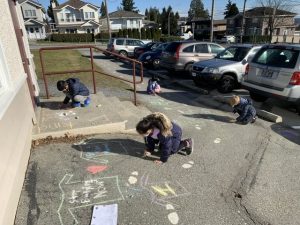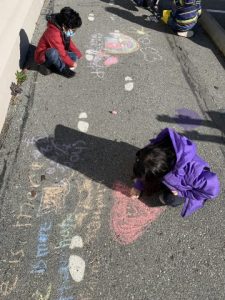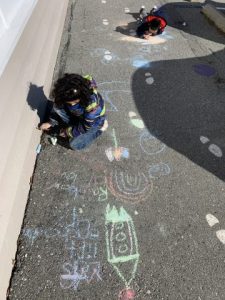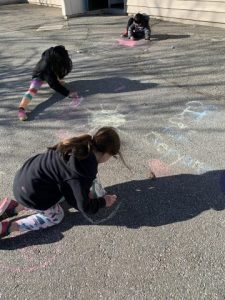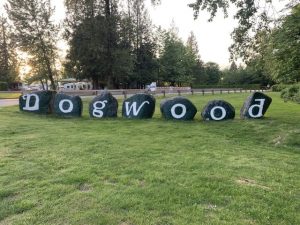 The official flower symbol for our province of British Columbia is the Pacific Dogwood. It is our floral emblem. The Dogwood tree flowers in April and May. In the autumn, it is known for its cluster of bright red berries and colourful leaves.
The official flower symbol for our province of British Columbia is the Pacific Dogwood. It is our floral emblem. The Dogwood tree flowers in April and May. In the autumn, it is known for its cluster of bright red berries and colourful leaves.
Students in Division 10 have been observing Pacific Dogwood trees in the Clinton School neighbourhood. We have learned that the wood was used for making knitting needles by the Cowichan people and the deep brown bark was used for dye by the Salish. The wood has also been used for piano keys.
The branches provide shelter for land and water animals. The flowers provide nectar to pollinating insects. The fruit becomes food for birds and mammals. The buds, twigs and leaves are munched on by local wildlife. Bears and beavers enjoy the leaves and the twigs are food for deers.
We have been observing the white flowered Pacific Dogwood. We have also seen the Pink Dogwood tree which is used as an ornamental tree in gardens.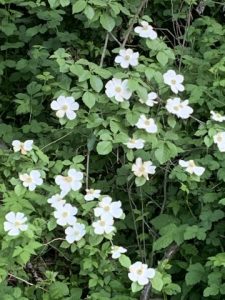
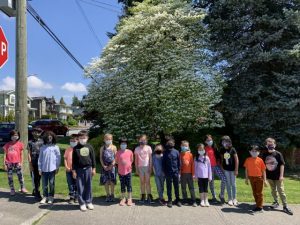
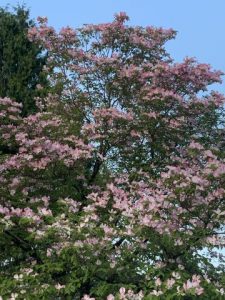
Thank You Burnaby Health Care Workers!
Division 10 was so very thrilled to be able to support our Burnaby Health Care Workers with pieces of art appreciation.
They painted flower gardens in honour of those who have been on the front lines of care giving in our community.
The students shared that the flowers represent: peace, happiness, joy, love, kindness, appreciation, growth and strength! Kai said that the gardens gave “flower power” to our health care workers!
Take a look at the Flower Power Appreciation Art created by the students:
At Clinton, we are celebrating our planet by wearing Earth Colour Clothing this Friday, April 30. Every day, not just Earth Day or Earth Month, should be a day of recognizing our role as global citizens.
Division 10 has been having many discussions and conversations about supporting our planet and finding ways to heal our home, Earth. Attached is a link to a book that you may want to share.
We had many feelings, ideas and questions about Bad Future, Better Future.
We certainly concluded that we want to do what we can so we have a better future!
https://www.nytimes.com/interactive/2021/04/18/climate/climate-change-future-kids.html
Experiencing our new garden and outdoor classroom on Earth Day! Let’s walk lightly on our Earth!
Please click on the link to access our Earth Day Poem recital. April is Poetry Month!
Check below for our outdoor garden reading time. We are reading Watch It Grow as we have bean and pea seeds planted in our classroom greenhouse.
We have had an exciting week before Spring Break.
We honoured amazing women of our world during International Women’s Day. We looked at Malala and Jane Goodall who used their pens to write their thoughts and understandings, leading them to share their voice for those who were unable to speak for themselves. Students then created their own wishes for their magic pencils.
We illustrated our Youniverse poems that shared creative animals from our imagination. We used Stardines by Jack Prelutsky as our inspiration.
We had a competitive, team-spirited floor hockey finals with exertion levels at an all-time high.
Taking time to learn about rainbows thanks to Mystery Doug encouraged us to take a peek outside with some prisms. We also considered all the possibilities of what A Rock Can Be…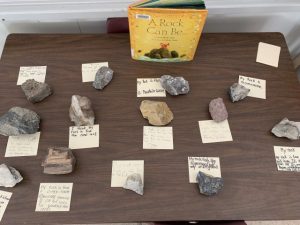
We then spent a moment with the Vancouver Art Gallery and participated in an online workshop about Shuvinia Ashoona, an artist from Nunavet. Her creations got out minds thinking and students began to create their own picture murals using pencil crayons. The books, The Tree Lady and If You Come To Earth helped us with our designs.
Our classroom big essential question has always been, “What Are The Possibilities Of Looking In A Book” and this week books have made us open our eyes, made us think more deeply and touched our hearts.
I hope your hearts will be happy and healthy over the Spring Break. Enjoy time with family. I’ll be enjoying time with this little guy. 
 He is my Leo.
He is my Leo.
Take care and we will see you all soon,
Mrs. E. and Division 10!
We have been learning about structures. There are many structures in nature created by animals. This Spring Break, families may be able to notice the structures created by many birds in their natural habitats. The Beaver is another builder that makes use of the trees of their habitat. Their lodges are noticeable in ponds and lakes right here in Burnaby.
Division 10 students decided to offer their services to the beavers. They role-played that they were architects for a building business and the beavers were their clients. Check out their beaver lodge builds and their business comments.
Taj Sahaj Beaver Lodge Builders: We started with a mud base and then added brown sticks and kept building upward. Our challenge was making sure it wouldn’t fall. We enjoyed sticking the sticks inside the mud and adding moss. Taj and Sahaj
Nature’s Building Group: We started by making a really strong base in the shape of pentagon. We built 9 layers. After we made an open space for the beavers to live, we added the roof. Our challenge was keeping the sticks together with the mud. We enjoyed throwing sticks around for the roof. Maiia and Mashi
Tree-O Architects: The three of us started with the ground. We began with the shape of a triangle. We added sticks to make the sides of the lodge. We put mud to keep the sticks building up. Our challenge was that it kept falling apart. We worked together to make it stable. Karina, Karen and Arya
Beaver Builders: We started with the bottom and then we began to build up. We added some mud at the top. We covered the mud with bark. Our challenge was molding the mud so that the sticks would be strong on the side. We enjoyed building the lodge and we hope our clients are happy. Kai and Parineet
Beaver Stick Business: We started by making a square shape on the bottom. Then we filled the square in. We then tried to build the rest of it in a circle shape. The challenge was trying to get the round shape. We were happy that we never gave up. We like our lodge. Dayven and Hope
Muddy Lodge Building Company: The first thing we did was the mud surface. Then we began to add the sticks while using more mud. We kept adding sticks so we wouldn’t have too many spaces and we would have a larger lodge. Our challenge was keeping the mud sticky enough to hold the twigs. We enjoyed adding the grass and nature layer. Kyle and Linden
Recent neuroscience research shows that we are all in a “collective crisis” with our brain being challenged by 3 experiences: unpredictability, isolation, restraint/restriction! (Dr. Lori Desautels) It is important that we continue to have conversations and opportunities to express our feelings. It is important that we stay connected.
Students in Division 10 have had a chance to share how they feel about 3 areas of their lives. They added to our graffiti walls with words that expressed how they feel about the Pandemic, School and Nature.
It is very powerful to see the students engage and experience connections at School during these unusual times. It is also very important to recognize the affect Nature has on our brains and how enriching time in Nature can be in order to give calm and peace to our mind and body.
As students reflected on their mind and body state, they were proud of the emotions they came up with for our Street Life Graffiti Walls. It is clear, by their word choices, that School and Nature provide positive experiences for Div. 10.
